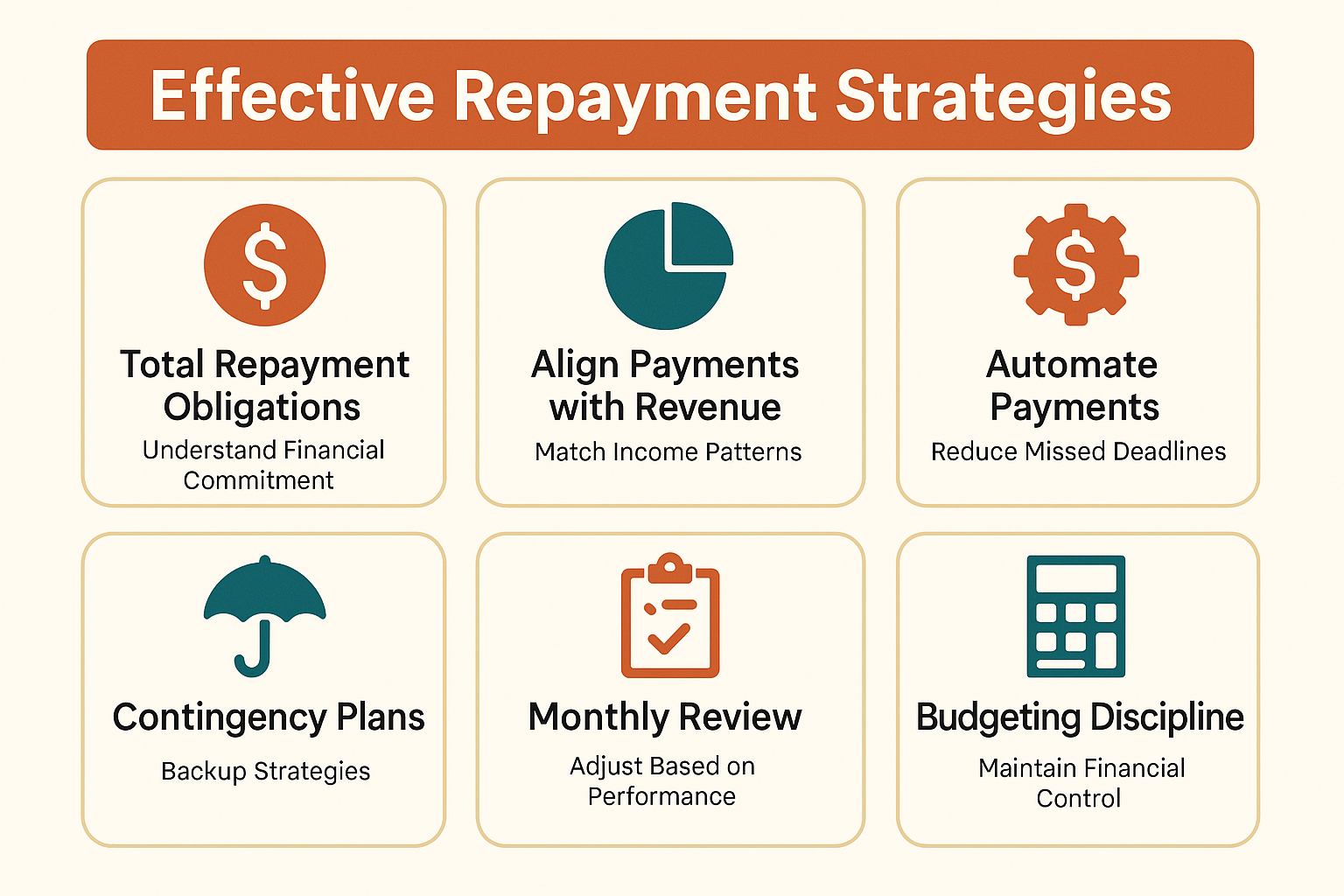Smart Strategies for Managing Cash Flow After Receiving Funding
Receiving funding for your business is just the beginning of your financial journey. Managing cash flow after receiving funding might be one of the most critical skills you'll need to master as a business owner. Whether you've secured a merchant cash advance, traditional financing, or alternative funding, how you handle your cash flow in the months following can determine your long-term success.
The funding landscape continues to evolve, with new regulations taking effect and market conditions shifting. Understanding these changes can help you optimize your financial strategies and make smarter decisions about repayment scheduling, budgeting, and reinvestment opportunities.
What You Should Do After Receiving Funding
Implementing the right practices when managing cash flow after receiving funding sets the foundation for sustainable growth. These essential do's can help you maximize the benefits of your funding while maintaining financial stability.
- Create a detailed repayment schedule immediately: Map out your payment obligations from day one, accounting for daily, weekly, or monthly requirements depending on your funding type
- Establish separate accounts for operations and repayments: Keep your funding repayments isolated from daily operational expenses to avoid confusion and ensure you never miss payments
- Monitor your daily cash position religiously: Track inflows and outflows daily, especially if you have merchant cash advance repayments tied to your revenue
- Build a cash reserve buffer: Set aside 10-15% of your funding as a safety net for unexpected expenses or temporary revenue dips
- Document all funding-related expenses and improvements: Keep detailed records of how you use the funds for tax purposes and future funding applications
Critical Mistakes to Avoid With Your Funding
While there are proven strategies for success, certain pitfalls can derail your financial progress. Avoiding these common mistakes when managing cash flow after receiving funding can save you from serious financial trouble down the road.
- Don't use funding for personal expenses: Mixing business funding with personal costs can create tax complications and hurt your business's financial health
- Don't ignore the terms of your funding agreement: Failing to understand repayment structures, especially with merchant cash advances, can lead to unexpected financial strain
- Don't delay creating a repayment plan: Procrastinating on financial planning often results in missed payments and damaged relationships with funders
- Don't assume all funding types work the same way: Different funding mechanisms have unique repayment structures that require tailored management approaches
- Don't spend the entire amount immediately: Rushed spending decisions without proper budgeting typically lead to cash flow problems within the first few months
Essential Steps for Effective Repayment Scheduling

Successful repayment scheduling forms the backbone of managing cash flow after receiving funding. These systematic steps can help you stay on track with your obligations while maintaining operational flexibility.
- Calculate your total repayment obligations: Add up all payments including principal, fees, and any additional costs to understand your complete financial commitment over the funding period
- Align payments with your revenue cycles: Match repayment dates with your typical income patterns, such as scheduling payments after your busiest sales days or customer payment cycles
- Set up automated systems where possible: Use banking tools to automate routine payments, reducing the risk of missed deadlines and late fees
- Create contingency scenarios: Develop backup plans for slower revenue periods, including communication strategies with your funder if temporary adjustments become necessary
- Review and adjust monthly: Regularly evaluate your repayment schedule's effectiveness and make refinements based on actual business performance and cash flow patterns
Strategic Budgeting Methods for Funded Businesses
Effective budgeting becomes even more crucial when managing cash flow after receiving funding. These proven methods can help you allocate resources wisely while meeting all your financial obligations.
- Implement the 50-30-20 business rule: Allocate roughly 50% for operational expenses, 30% for growth investments, and 20% for debt service and reserves, adjusting percentages based on your specific funding terms
- Use zero-based budgeting for funded projects: Start from scratch when budgeting funded initiatives, justifying every expense rather than simply increasing previous budgets
- Create rolling 13-week cash flow forecasts: Maintain a detailed quarterly outlook that updates weekly, helping you anticipate and prepare for cash flow fluctuations
- Establish spending approval thresholds: Set clear limits for different types of expenses, requiring additional authorization for purchases above certain amounts to maintain budget discipline
- Track budget variance weekly: Compare actual spending against projected budgets every week, identifying trends early so you can make corrective adjustments before problems escalate
Smart Reinvestment Strategies for Growth
Knowing how to reinvest wisely is a key component of managing cash flow after receiving funding. These strategic approaches can help you generate returns that support both growth and repayment obligations.
- Prioritize revenue-generating investments first: Focus funding on initiatives that can quickly increase sales or improve profit margins, such as marketing campaigns, inventory expansion, or efficiency improvements
- Consider scalable technology solutions: Invest in systems that can grow with your business, like customer management software or automated processes that reduce long-term operational costs
- Evaluate return on investment timelines: Choose reinvestment opportunities that can generate returns within your funding repayment period, ensuring you can meet obligations while building for the future
- Diversify your reinvestment portfolio: Spread funding across multiple initiatives rather than putting everything into one area, reducing risk while maximizing potential benefits
- Measure and adjust investment performance: Track the results of your reinvestments monthly, reallocating resources from underperforming areas to those showing stronger returns
Successfully managing cash flow after receiving funding requires discipline, planning, and continuous attention to detail. The strategies outlined here can help you make the most of your funding while building a sustainable financial foundation for your business.
Remember that the funding landscape continues to evolve, with new regulations and market conditions affecting how businesses can access and manage capital. Staying informed about these changes and adapting your cash flow management strategies accordingly will serve you well in the long run.
Whether you're working with a merchant cash advance, traditional financing, or alternative funding sources, the principles of careful budgeting, strategic repayment scheduling, and smart reinvestment remain constant. By following these guidelines and avoiding common pitfalls, you'll be better positioned to achieve your business goals while maintaining strong financial health.

.png)






